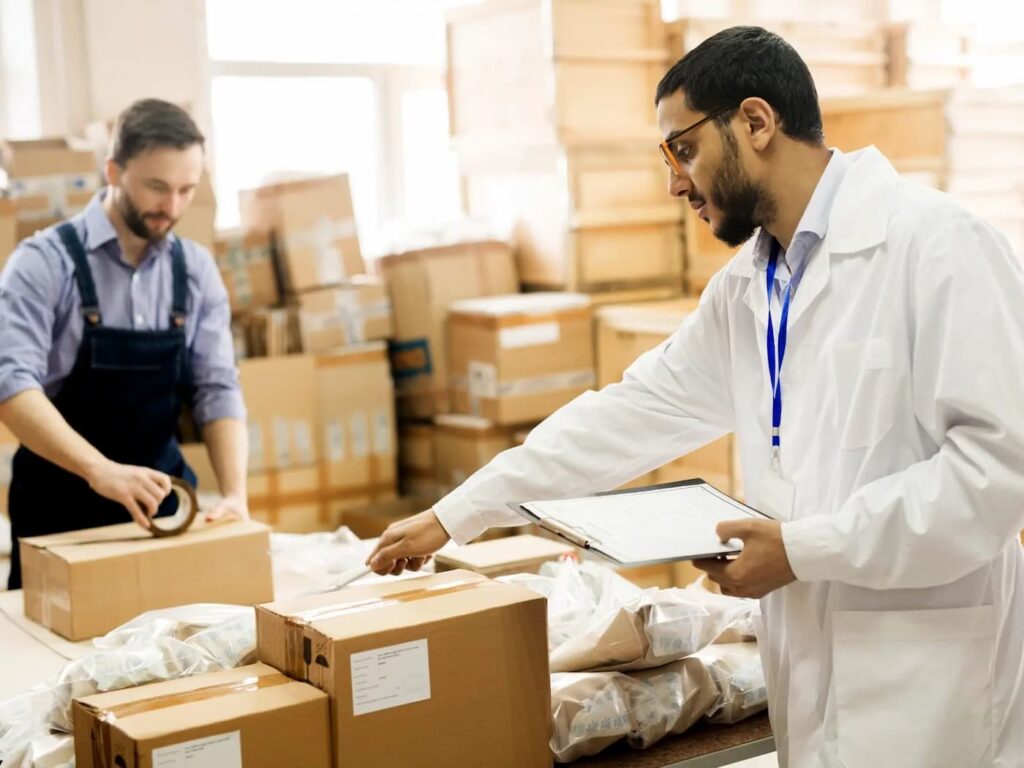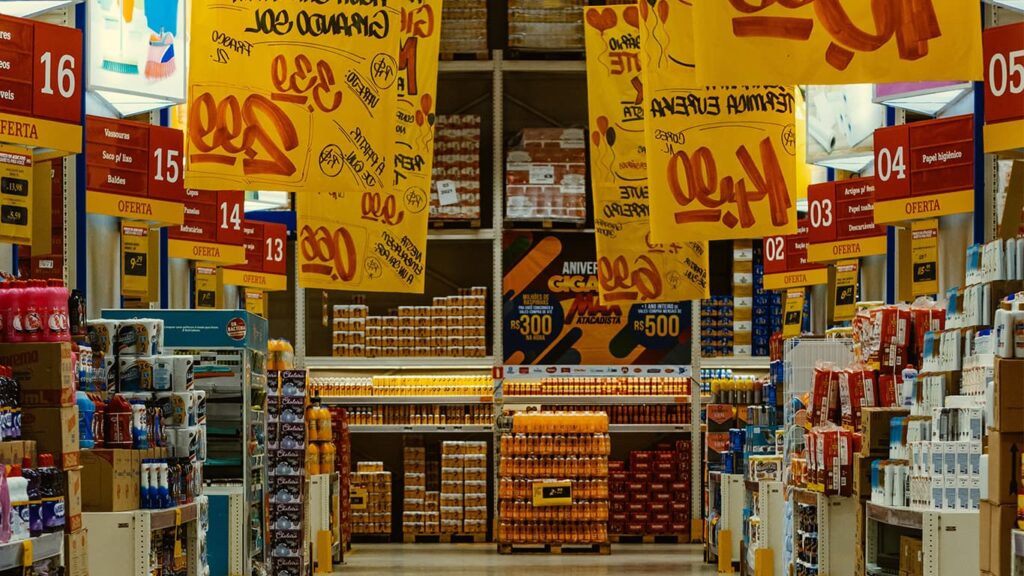Ever shipped a product only to find it arrived damaged? You're not alone, and the cost isn't just financial. Damaged products can hurt your reputation, delay deliveries, and frustrate customers. That's where packaging testing methods come in. These techniques help you validate whether your packaging can withstand real-world stress during shipping, handling, and storage.
This comprehensive guide walks you through the top packaging testing methods, explains industry standards, explores equipment options, and gives you actionable tips to protect your products and your brand. Whether you're a quality assurance professional, packaging engineer, or product manufacturer, this post will be your go-to reference for packaging test best practices and insights.
Access Consumer Insights at Scale
Why Packaging Testing Matters
If packaging fails, your entire product lifecycle is at risk. Beyond physical damage, poorly tested packaging can trigger customer complaints, loss of brand equity, and non-compliance with regulations. It's not just about surviving the supply chain; it's about ensuring your packaging performs consistently across diverse environments and conditions.
- The Cost of Damaged Shipments
- 20% of returns are due to damaged products.
- Damaged packaging leads to customer dissatisfaction, refunds, and loss of trust.
- Replacing products increases logistics, warehousing, and operational costs.
- Returns management also burdens your customer service and reverse logistics systems.
- Benefits of Effective Package Testing
- Reduces product returns and complaints.
- Helps meet compliance and regulatory requirements.
- Enhances shelf appeal and structural performance.
- Demonstrates sustainability and durability to eco-conscious consumers.
- Contributes to safer working conditions in warehousing and transportation.
Testing early in your product development cycle helps you avoid costly redesigns, improves launch timelines, and supports scalable manufacturing.
Core Packaging Testing Methods
Packaging experiences various physical, mechanical, and environmental stresses throughout its journey, from the warehouse to the consumer. The following core testing methods simulate those real-world conditions and help ensure your packaging solutions hold up under pressure.
1. Drop Test
Purpose: Simulates the impact of dropping during shipping and handling.
- Common standards: ISTA 1A, ASTM D5276
- Tests performed from multiple angles: corner, edge, and flat face drops
- Drop heights vary based on product weight and shipping conditions
- Identifies weak points in design or structural integrity
2. Vibration Test
Purpose: Assesses how your packaging holds up to consistent vibrations during transit.
- Simulates transportation via trucks, rail, and conveyor belts
- Equipment: Electrodynamic or hydraulic vibration tables
- Helps detect fastener loosening, surface wear, and load shifting
- Often used with other tests like compression or drop, for holistic analysis
3. Compression Test
Purpose: Measures your package's ability to withstand stacking pressure in warehouses or shipping containers.
- Standards: ASTM D642
- Equipment: Vertical compression testers
- Evaluates the maximum load a package can bear without deformation
- Crucial for palletized or containerized shipments
4. Climate Conditioning Test
Purpose: Evaluates packaging performance under environmental extremes.
- Simulates temperature and humidity changes encountered during storage and transport
- Often used for food, pharmaceutical, and cosmetic products
- Ensures adhesives, seals, inks, and coatings maintain integrity
- Prevents product spoilage or contamination due to environmental exposure
5. Burst and Puncture Tests
Purpose: Determines strength against sudden pressure changes or impact penetration.
- Burst Test: Measures internal pressure resistance (ASTM D3786)
- Puncture Test: Identifies resistance to sharp object penetration (ASTM D3420)
- Critical for liquid packaging, vacuum-sealed products, and heavy-duty boxes
- Helps anticipate risks from mechanical handling equipment
Read more: Packaging Testing Methods for CPG: Comprehensive Guide
Packaging Testing Standards You Should Know
Testing is only reliable when it follows recognized industry standards. These standards ensure consistency, compliance, and comparability across product lines, vendors, and countries. Here's a breakdown of the most widely accepted packaging test protocols.
| Standard | Organization | Purpose |
| ISTA Series | International Safe Transit Association | Simulates shipping hazards |
| ASTM D4169 | ASTM International | Distribution simulation |
| ISO 11607 | International Organization for Standardization | Medical device packaging |
- Why These Standards Matter
- ISTA protocols are designed to mimic real-world distribution and transit challenges. Ideal for e-commerce and retail supply chains.
- ASTM standards ensure your materials meet specific performance metrics under stress.
- ISO standards offer global consistency, particularly important in international markets or regulated sectors like healthcare.
The above-mentioned standardized methods boost credibility with retailers, carriers, and regulatory bodies and can reduce liability in case of claims.
Types of Packaging Tests by Packaging Material
Not all materials behave the same under stress. Tailoring your tests to specific packaging types ensures more accurate data and reliable performance across applications. Below are some common material types and the tests best suited to each.
1. Corrugated Boxes
- Compression Test: Evaluates stacking strength
- Edge Crush Test (ECT): Measures resistance to side compression
- Drop Test: Checks impact resistance during handling
- Also, consider vibration testing for high-volume shipping environments
2. Flexible Packaging (Pouches, Sachets)
- Seal Strength Test: Ensures sealed edges won't fail under pressure
- Puncture Resistance: Prevents leaks from external forces
- Peel Test: Measures ease of opening without compromising product protection
- Important for single-use consumables and sterile products
3. Glass and Rigid Containers
- Impact Resistance: Determines the ability to withstand shocks
- Thermal Shock Testing: Simulates sudden temperature changes
- Pressure/Vacuum Testing: Evaluates sealing strength and container integrity
- Ideal for beverages, pharmaceuticals, and cosmetics
| Material | Recommended Tests |
| Corrugated Cardboard | Compression, Drop, Vibration |
| Plastic Film | Puncture, Seal Strength, Tear Resistance |
| Glass | Impact, Pressure, Thermal Shock |
Packaging Compatibility Testing
Compatibility testing ensures your product does not chemically or physically interact with its packaging over time. This is especially vital in industries like food, cosmetics, chemicals, and pharmaceuticals, where contamination or degradation can lead to health risks, recalls, or regulatory action.
- Key Factors to Evaluate
- Chemical leaching from packaging to product (or vice versa)
- Material degradation or discoloration
- Taste, odor, or texture alteration in food
- Container deformation due to volatile or reactive contents
- Migration of inks, glues, or stabilizers into the product
- Real-World Example
A skincare company introduced new plastic packaging for an alcohol-based toner. Initial sales were strong, but after a few weeks, customers reported leakage and odor changes. Compatibility testing revealed that the plastic material broke down when exposed to high alcohol concentrations. They quickly pivoted to alcohol-resistant PET, avoiding brand damage and product recalls.
How to Set Up a Packaging Testing Protocol
Developing a structured testing protocol helps ensure repeatability, compliance, and continuous improvement. A robust strategy accounts for packaging type, market demands, and evolving regulations.
a) Define Test Objectives
- Clarify what you're trying to achieve: cost savings, durability, sustainability, regulatory compliance, or product innovation?
- Identify the environments your package will face: retail, e-commerce, cold chain, or global freight?
b) Choose Appropriate Standards
- Use ISTA or ASTM standards as a starting point
- Consider customer requirements, logistics chain, and carrier-specific guidelines
- Refer to government or international regulations, where applicable
c) Simulate Real-World Scenarios
- Base simulations on actual shipping routes, historical damage reports, or seasonal variables
- Combine tests (e.g., vibration + compression) to uncover compound weaknesses
- Include variable factors such as packaging orientation or unit load configurations
d) Document and Iterate
- Maintain detailed records of testing parameters and results
- Use findings to refine materials, adjust designs, or change suppliers
- Make testing a continuous part of product development, not a one-time activity
Peekage offers real-world in-home product testing with consumers and can complement lab-based testing. Consider combining lab validation with consumer feedback for the best results.
Choosing the Right Packaging Test Equipment
Choosing the right equipment is essential for accurate, repeatable results. Your selection depends on packaging volume, product sensitivity, in-house capabilities, and budget constraints.
- Common Testing Equipment
- Drop Test Machines: Simulate accidental drops and mishandling
- Vibration Tables: Recreate transportation-induced motion
- Climate Chambers: Apply temperature and humidity variations
- Seal Strength Testers: Evaluate the integrity of flexible seals
- Compression Testers: Assess load-bearing capabilities
- What to Consider
- Calibration and repeatability of results
- Compliance with applicable testing standards
- Software integration and data logging for audit purposes
- Total cost of ownership vs. outsourcing to certified labs
- Availability of operator training and technical support
Strategy Note: For small-to-medium manufacturers, outsourcing or third-party labs can provide flexibility without major capital investment. For high-volume operations, owning the equipment improves speed and control.
Conclusion
Reliable packaging isn't a luxury; it's a necessity. Using the right packaging testing methods can save you from costly damages, delays, compliance failures, and disappointed customers. Whether you're evaluating corrugated boxes or flexible pouches, there's a proven method to test their durability and performance.
Packaging testing isn't a one-time task; it's a core part of delivering quality. To minimize risk and maximize brand trust, prioritize a structured testing program that evolves with your products and supply chains.
Want to avoid packaging failures and ensure your product stays safe from production to delivery? Start building a solid packaging test protocol or partner with expert labs and consumer insight platforms like Peekage, which combine technical testing with real consumer feedback for more reliable, insight-driven results.
FAQs
Packaging testing evaluates how packaging materials and designs perform under various stresses to ensure they protect the product during shipping, handling, and storage.
Key package testing methods include:
- Drop tests
- Vibration tests
- Compression tests
- Climate conditioning
- Seal and puncture resistance tests
Because some products can chemically react with their packaging. This test prevents product degradation, contamination, or safety hazards.
- At the start of a new product launch
- When changing materials or suppliers
- After customer complaints or quality issues
- At regular intervals as part of QA programs
Yes, but it requires investment in equipment, software, and trained personnel. Many companies begin with third-party labs, then expand into in-house testing as their needs scale.
References
- Considerations When Choosing Packaging Material, Paramount Global,
https://www.paramountglobal.com/knowledge/factors-to-consider-when-choosing-packaging-material/ - How to create a package integrity testing plan, Pick FU,
https://www.pickfu.com/blog/package-integrity-testing/ - Food Packaging and Food Container Testing, Qima,
https://www.qima.com/consumer-products/lab-testing/food-packaging-and-containers - What is a package drop test?, Sofeast,
https://www.sofeast.com/glossary/package-drop-test/




